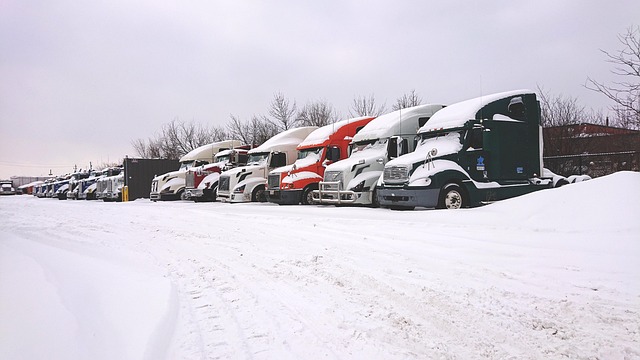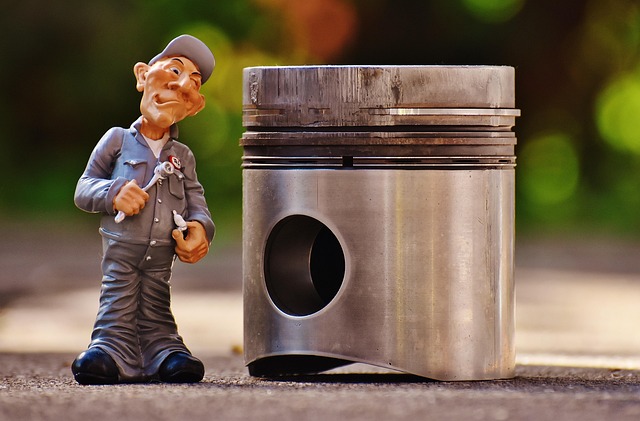Looking to register your car in California? This comprehensive guide walks you through every step, from understanding eligibility requirements to obtaining your vehicle license plate. We cover essential documents needed at the California DMV, including a VIN verifier, and explain how to complete the registration process whether in-person or online. By following these simple steps, you’ll be cruising down the highway in no time with a legally registered vehicle.
- Understand Eligibility Requirements for Car Registration
- Gather Necessary Documents for California DMV
- Perform Vehicle Inspection and Title Verification
- Complete Registration Application at DMV or Online
- Pay Registration Fees and Obtain Your Vehicle License Plate
Understand Eligibility Requirements for Car Registration

Before registering your car in California, it’s crucial to understand the eligibility requirements set by the Department of Motor Vehicles (DMV). To start, ensure that your vehicle meets all safety and emission standards as per California regulations. The DMV also mandates a valid registration from the state where you previously registered your car or purchased it if it’s brand new. A clean driving record is another essential factor; any outstanding violations or issues could delay or prevent registration.
Additionally, every vehicle in California must have its Vehicle Identification Number (VIN) verified. This process can be completed through a DMV vin verifier or even with a mobile vin inspection service to confirm the vehicle’s authenticity and history, helping to combat theft and fraud. Always refer to the DMV’s official guidelines for the most accurate information regarding car registration in California.
Gather Necessary Documents for California DMV

Before you start the registration process for your vehicle in California, make sure you have all the essential documents ready. The California Department of Motor Vehicles (DMV) requires a variety of information to ensure a smooth and accurate registration. One crucial document is the Vehicle Identification Number (VIN) verifier, which can be obtained through a mobile vin inspection or by visiting a DMV office. This unique 17-character code is essential for identifying your vehicle’s make, model, year, and other specifications.
Additionally, you’ll need proof of ownership, typically a title document, along with valid identification like a driver’s license or state ID card. Other required documents include insurance proof, registration fees, and possibly, if applicable, a bill of sale or a previous registration record. A mobile vin verification service can help ensure that all your paperwork is in order, making the registration process quicker and less stressful.
Perform Vehicle Inspection and Title Verification

Before registering your car in California, it’s crucial to ensure that your vehicle meets all safety and emission standards. Start by scheduling a Vehicle Inspection at a certified location. This inspection will verify that critical components like brakes, lights, tires, and emissions systems are in proper working order. You can conveniently opt for a mobile vin inspection service where a technician comes to you for this purpose.
Additionally, confirm the vehicle’s history through Title Verification using its unique Vehicle Identification Number (VIN). The California Department of Motor Vehicles (DMV) recommends utilizing a trusted VIN verifier to access detailed information about previous owners, accidents, and maintenance records. This step is essential in ensuring that the car you’re registering has not been reported stolen or had significant damage. Consider a mobile vin verification service for added convenience, allowing you to complete this crucial process from the comfort of your home or office.
Complete Registration Application at DMV or Online

To begin the car registration process in California, you’ll need to complete either a paper or digital Registration Application at the DMV (Department of Motor Vehicles) or its designated online platform. If choosing the latter option, utilize their official website and access the application through their secure portal. This crucial step involves providing detailed information about your vehicle, including its make, model, year, and unique Vehicle Identification Number (VIN). The VIN is a critical component in the registration process, as it allows for precise identification of your car.
Using the DMV’s recommended tools, such as their VIN verifier, ensures that you input the correct data. This service aids in verifying the vehicle’s history and ensuring its compliance with California’s registration standards. An alternative to this traditional method is a mobile vin inspection or verification, offering convenience for those unable to visit a DMV office.
Pay Registration Fees and Obtain Your Vehicle License Plate

After completing your vehicle’s registration application at the California DMV (Department of Motor Vehicles), it’s time to pay the registration fees. These fees vary based on the type of vehicle and its age, so make sure to check the official DMV website for accurate pricing information. You can typically pay online, by phone, or in person at a local DMV office. Once your payment is processed, you’ll receive a confirmation and can proceed with obtaining your vehicle’s license plate.
A crucial step in this process involves using a DMV vin verifier to ensure the accuracy of your vehicle’s identification number (VIN). This can be done through a mobile vin verification or inspection service, which allows you to quickly validate the VIN data without visiting a physical location. By cross-referencing the provided information with official records, you can have peace of mind knowing that your license plate will match your vehicle’s details.
Registering a car in California involves understanding eligibility requirements, gathering essential documents, completing an application, and paying fees. By adhering to these straightforward steps, including using a reliable DMV VIN verifier for title verification, you can efficiently navigate the process. Ensure your vehicle is safe and compliant with local standards, then get ready to hit the road with peace of mind.
